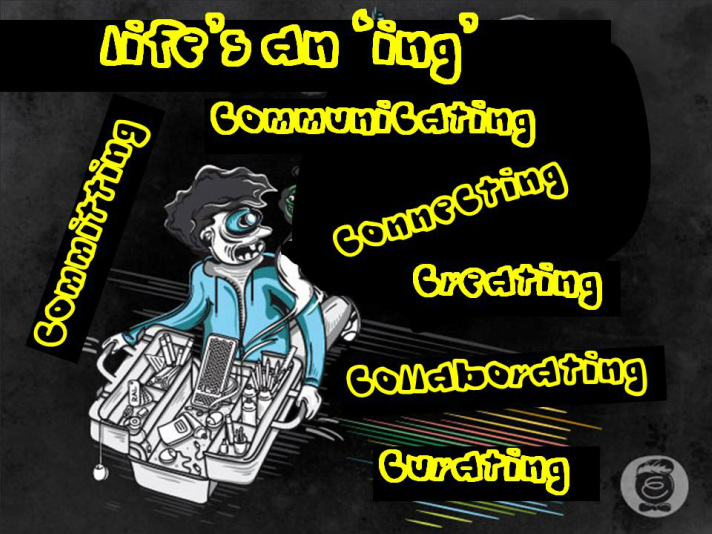 In this final reflection I look back on my own engagement with the process and what I gained from it. My overall sense is that the time I invested was worthwhile. I think I probably invested about 20 hours through the week on exploring and trying to use some of the tools, reflecting on my own practices, attitudes and behaviours and the circumstances in which I use these digital/media tools, writing up my thoughts under each theme and listening to the daily twitter conversation. Perhaps the missing C that kept being talked about was commitment. There is an opportunity cost in engaging with technology initially to be competent and confident in using it and then to apply it. It doesn't always work and I had many instances during the week when what I tried didn't work and I was both frustrated and demotivated. I also lost my power lead to my tablet and managed to pick up something through my downloads. I was grateful to the person who tweeted that they had had trouble with an app. I often have trouble trying to make things work and this aspect of learning often gets glossed over in the enthusiasm for the technology. In fact my criticisms of the experience were in the overwhelming positivity and enthusiasm expressed by participants - not surprising given that many were in the business of promoting these technologies and were so familiar with them that they didn't give it a second thought. Perhaps there is a need for BYOD4L 'for beginners'. Accepting that I probably wasn't typical of the participants in that I didn't have a teaching role within an organisation. The things I valued most which worked best for me were: 1 The resources. Sue's collections of tools and the introductory videos are a great resource that I have embedded in my own website for future use. I didn't find the scenarios useful. 2 Examples and illustrations of the use of the technologies.. these were great in showing what could be done. In particular some of the curatorial tools like scoop.it and paper.li. The twitter conversation was I felt conducted between like minded people who are genuinely enthusiastic about the use of devices and tools. The sheer volume of tweets was overwhelming more like a brainstorming exercise. I found reading some of the more considered reflections more valuable. What was great was seeing the enthusiasm, commitment, teamwork, care and attention and personal support the facilitators gave to the process and the people in it. A real lesson in the energy, passion, care, dedication and expertise necessary to make these sorts of learning experiences work. I gained useful insights into what had to be done to make this form of learning work. Offline I had some good conversations with my son who managed to spend a bit of time looking at the resources and tuned into the twitter conversation most evenings. So it achieved that objective. The tension for me throughout the BYOD4L experience was the push towards using mobile devices (not surprising given that this is what it was about) when my preferred device - because I am mainly based at home, is my laptop. But restricting myself to my laptop means I cannot access apps which are only designed for mobile devices. But by the end of the week I could see that my own work to support LWE could be enhanced with the selective use of mobile devices and some of the tools. More importantly I decided that my need to embrace these new media tools is not so much driven by own interests but by the interests of others who want to express themselves using the technologies that they prefer to represent their own learning, development and achievement and this changed my perspective. Throughout the week I tried to reflect on my own attitudes and practices in the contexts of my own circumstances and I will continue to do so over the next few weeks and try out some more of the tools. The idea of structuring the experience around five key concepts really helped focus attention on key aspects of living, working and playing in the digital world and for me these were powerful reflective prompts which also triggered my creative juices. The magical box that was the course did indeed promote and enable all these things which are all fundamental to learning, development and achievement - communicate, connect, collaborate, create and curate. In addition it encouraged participants to commit and enabled them to contribute and learn in the process of co-creating some of the content. Thanks to all who designed and facilitated the process and experience. It was an interesting and enlightening experience. 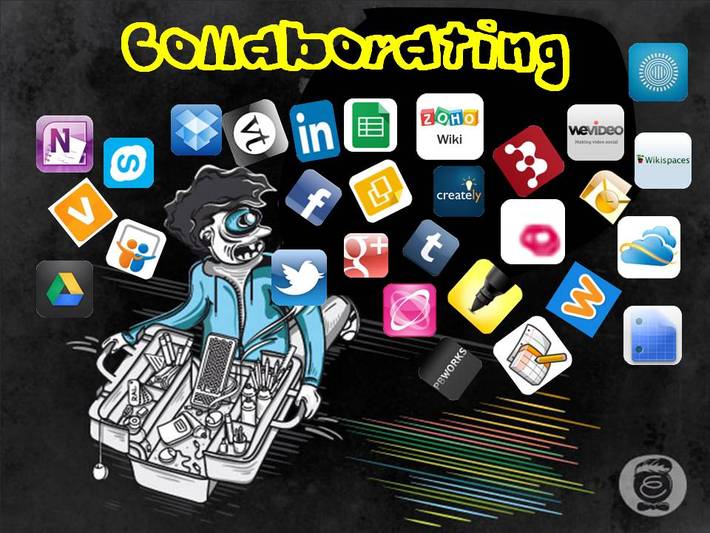 Life's an 'ing' - collaborating - visioning, leading, self-organising, connecting, interacting, teamworking, coordinating, combining, partnering, facilitating, pooling, exchanging, communicating, co-producing, co-creating, co-authoring, sharing, collating, synthesising, energising, encouraging, supporting, empathising, respecting, valuing, validating - learning partnerships Collaboration is the name we give to a process where people work together to achieve something they collectively value - a common project. Whether it is formal education or informal learning and development collaboration requires individuals to participate in a social process of knowledge construction often associated with making, producing or performing something. Knowledge is co-created by participants and emerges through a network of interactions and conversations and distributed and mediated by the people and the tools that they use for interacting. Most of my working life has been spent in working or research collaborative ventures either with one or two individuals, small teams (less than 10), larger communities of interest or sometimes personally constructed networks of individuals. When I look back over 40 years my earliest collaborations involved writings on type writers then exchanging scripts and annotating them or literally cutting and pasting. In the 1980's word processing and email changed all this and now there are many tools to help with co-creation and sharing of knowledge and co-authoring of works. In my own life my main collaborative projects are involved with Lifewide Education. The very idea is founded on a community of interest in which people 'collaborate' simply by wanting to identify with a vision and stay connected to the information and knowledge that is being produced. This is the loosest notion of collaboration - associating with ideas. But within this project there are other collaborations - around the production of a magazine, e-books and conference for example. These forms of collaboration involve co-production of knowledge and the pooling of talents (including editorial and illustration) to produce quality works. Mostly we exchange stuff and have conversations via email. We find that this works well for us. Our research involves surveys and we have a dedicated website to enable people to contribute to on-line surveys. We also create fora for people to exchange their insights like the creativity in development site. I have used wikis (PBworks) in the past to support collaborations but not at the moment. 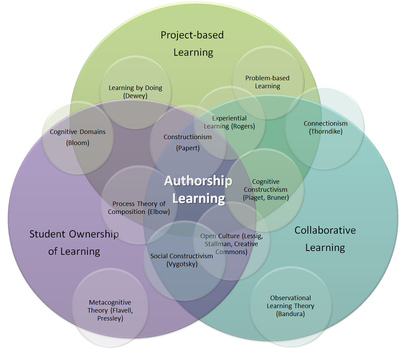 I felt that I didn't really need the sorts of collaborative tools that were being highlighted in BYOD4L and then I read an inspiring story of self-discovery told by Jonan Donaldson an instructional designer at Oregon State University and I realised that I had also made this journey. 'New digital tools available to students have flung open the doors to creativity, imagination, and student-directed learning. The sheer number of possibilities is daunting for any educator. Educational theory can help guide our choices and guidance of student learning. Constructionism has inspired me like no other idea in education has ever inspired me'. Our Learning Lives Challenge invites anyone to create a story about learning and development in any aspect of their lives using any medium and any digital tools to create their story. So my need is driven not by own interests but by the interests of others who want to express themselves using the technologies that they prefer to represent their own learning, development and achievement and this gave me another perspective on collaboration. Namely when a teacher relinquishes control over the way learning and development are recorded and represented and an author chooses to represent their learning using a particular device or tool, the teacher enters a partnership in learning in which their role is to try to utilise the particular technology, even if they are not familiar with it. Chrissi introduced me to Paper.li - a tool for collaboratively producing content primarily drawn from the twittersphere. Here is my first attempt at using it. 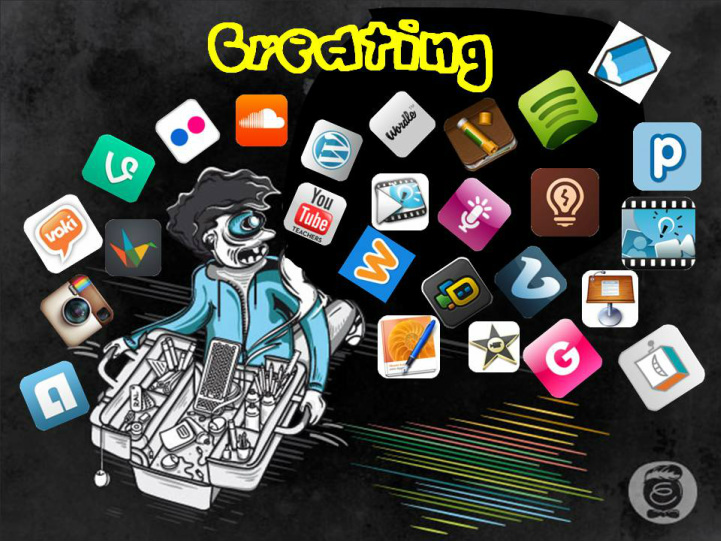 The final day is devoted to creating which I take to mean bringing something that is new to me into existence ie this blog and all the 'ing's' that make up the BOYD4L are potentially aspects of creativity and creating. I'm currently interested in the idea of creativity in development and with Chrissi have designed a process to enable people to share their perspectives on how it emerges from development. The narrative illustrates the process of having a novel idea, developing the idea and then making it a reality. It connects and integrates the ideas of creativity in imagining, developing, making, inventing, adapting and innovating. The focus for BYOD4L is on the way in which devices and tools enable the creative process. As far as my own experience and practice Web 2.0 tools have profoundly affected my ability to be creative/ inventive in my work in education and I'm grateful to all the people who have introduced tools and helped me use them over the years. Simply being able to create websites through drag and drop technology has enabled me to disseminate my ideas and create the infrastructure to support LWE. Sue's collection of tools is really useful and there are many with which I'm not familiar. I will over the next few weeks try to work through them to discover which ones I can use. I spend a lot of time creating visual aids like the narrative above to explain ideas and I'm conscious of mixing conventional tools like powerpoint, paint, photoshop, drawing on collections of images and working with illustrators as well as harnessing some of the tools below. A good example of this is my use of the explee animation tool described in my blog of 27/01.. to produce these animations I worked with two different illustrators some time ago - at that time I helped them shape their illustrations. These were then filed ready for retrieving at some point in the future. That moment came when I discovered explee (thanks to Chrissi). I retrieved the drawings and did some editing using paint, photoshop and powerpoint before uploading to explee and then embedding the result in this website. They were entirely new representations that have meaning and value to me. Creativity in the digital world is often a combination of many things but it emerges through the purposes and circumstances of our life. Over the next few weeks I intend to try out some of these tools. 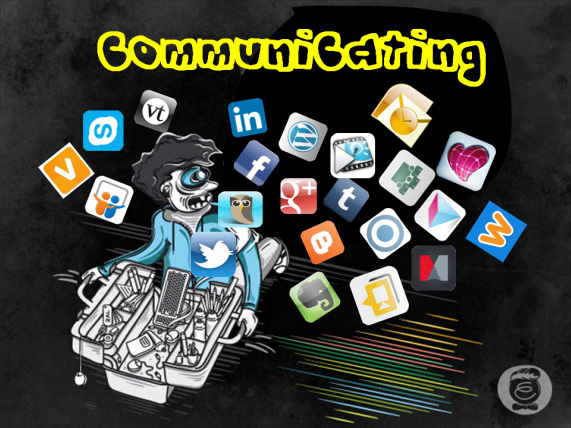 Life's an 'ing' COMMUNICATING - talking listening seeing feeling showing explaining demonstrating informing writing storytelling recording reflecting blogging tweeting and more persuading negotiating smiling laughing joking shouting singing dancing painting teaching facilitating coaching mentoring advising counselling ordering leading contacting conveying corresponding disclosing disseminating spreading broadcasting imparting interacting engaging animating relating revealing transmitting transferring publishing reporting journaling, advertising publicising .................... the list is endless Tuesday's BYOD4L prompt for reflection is communicating its so many things and so fundamental to being human and living in all the day to day contexts we inhabit and draw meanings from. Teaching as a parent, in a classroom or on-line evokes particular sets of contexts and situations and distinct repertoires of habits, behaviours, modes, tools and vehicles for communication. It involves an audience partner, family, friends, work colleagues and professional colleagues more generally, communities, the world and self. Tuesday's communication project was to keep my daughter's 18 month old twins safe, happy, entertained, engaged and hopefully learning and I can't see how ICT could have helped me. Wednesday I spent in a university talking to a people who were interested in LWE. We could have used skype but being physically present was important to what we discussed the way we discussed it and the results that came out. But I did use my communication devices travelling there and back on the train including checking into BYOD4L sites. In terms of time invested and value to me my internet enabled laptop is my most important communication device I use all the time for communicating in text (email and more extended forms), and visually - pictures, photos, illustrations, animations, audio and video using a wide range of software tools and applications. I have a dongle which means I can use it wherever I go and I find the keyboard easier to use than my phone. I use my smart phone for calling and receiving calls, texting and finding stuff out when I'm out and about. I generally don't post to my blog or forums directly and use my laptop for this. I post to maillists, and participate in groups and forums in a selective way. I have a suite of weebly websites which I maintain for information giving and community interaction. This website is the main site that I use to present myself and my work and to record things that are important to me in my life. I facilitate a community forum on one of my weebly sites. I also have an older suite if wikis on PBworks which is now essentially an archive. Other websites I have built in the past also serve as archives. In my LWE mentoring work with learner I use oovoo or skype but, thanks to BYOD4L, I will now check out google hangouts. We encourage learners to create their own website and blogs so that we can interact with them via this medium. I have experimented with twitter and go on it sporadically. Just recently I have been going on daily, following more people and making daily tweets. I can see it has value but I remain unconvinced it's an essential tool for me. In my LWE work we create significant content - e-books, Magazine, web pages, slideshows/ presentations. I share these through my website rather than slideshare. Just about everything I produce is freely available or produced under a Creative Commons Licence. I took the trouble this year to find out more about these licences. I maintain my profile and updates on my work through my own website, academia.eu and Linked-in (see above) I have a facebook account for family reasons but don't use it very much. My LInked-in Network I'm aware that I do not spend a great deal of time in the world of social media and I am probably missing stuff I should know about but I'm involved as much as I want to be at the moment. BYOD4L is a great opportunity to learn more and to see how other people are using tools and devices to communicate. I find showing and exemplification the most useful ways of learning. I looked at the collection of communication tools and learnt about google+ which I have signed up for. I also liked the Answer Garden and Linked in Network mapping tools and have used them both in my blog. Thanks to Sue I have a suite of tools to work through and explore their relevance to my communication world. I generally take things up when I can see their relevance to what I want or need to do. Life's an 'ing' CURATING - developing searching finding discovering harvesting recovering gathering filtering selecting choosing keeping saving storing archiving recording ordering organising collating categorising tagging filing re-presenting explaining contextualising reusing re-purposing packaging narrating re-framing connecting combining synthesising communicating collaborating sharing disseminating LEARNING This is an aspect of social media that I know least about and have most to learn. Using the museum analogy I see a curator (I created a geological museum in the dim and distant past!) as someone who looks after collections of things, who cares for and maintains them, makes them available to others, perhaps through displays and may be involved in the educational use of the collections, who may also search for and choice of the collections. I guess most of these ideas can be applied to collections of information & knowledge resources or artefacts either at a personal level or on behalf of a group or community. I also found other synonyms like keeper, steward, custodian and guardian. At our dinner time discussion I asked my children whether they maintained any collections of things and they thought they didn't although they appreciated that they visited and used collections maintained by others - eg Youtube, Spotify Facebook Harry Potter... Liverpool FC website.......to name a few. I know I benefit enormously from other people collections, for example I use google images several times a week and the repositories of TED talks and RSA Animate and I'm currently researching family history using the fantastic public records which I can access through Ancestry.com. I also curate for myself - this website being an example of stuff I'm gathering under the heading of 'my lifewide learning and development'. I have my own playlists on Youtube and music on Spotify. I perpetually gather articles and materials like images and store them for possible future use re-use and I occasionally visit slideshare and flikr for inspiration. I also curate for other people - the mission of Lifewide Education is to develop knowledge to advance understanding and practice and we do this through our websites and publications. For example I think our thematic issues of Lifewide Magazine serve to bring knowledge assets together and build a meaningful narrative around them and make these accessible to others. The magazine is the way we package display make sense of and disseminate the collections of perspectives and insights we have gained. It takes a great deal of effort to put together and we commission illustrators to illuminate some of the ideas. Having gathered made sense of and packaged these collections we make them available through the Magazine website and disseminate information about them through maillists community fora and websites. These 'curated works' are not just collections of existing materials they include new content in order to frame, link and build on what already exists. They are creative (new) products connecting combining synthesising and extending what already existed. Similarly our e-book project is intended to bring together accounts of practice in universities and colleges. In the past the websites and wikis we created for the SCEPTrE project now form publicly accessible archives for our work. These projects to gather and create resources that ultimately form collections that are curated and maintained have a strong collaborative and community building dimension to them. But such things are not the primary concern for BYOD4L and I am delighted to have Sue's collection of tools for harvesting and curating materials from the web which I will work through when I have more time. Through the examples shared on twitter I can see immediately the value of tools for gathering and collating stuff from twitter and I tried Scoop it for some topics I'm interested in. In fact today I was emailed my first daily summary of topics I'm interested in and I now see the value of creating topic lists. A few weeks ago Chrissi introduced me to paper.li and again I can see the potential of this tool as a means of collaborative creating and gathering content around a theme like Lifewide Education. Sue's tools Click to set custom HTML 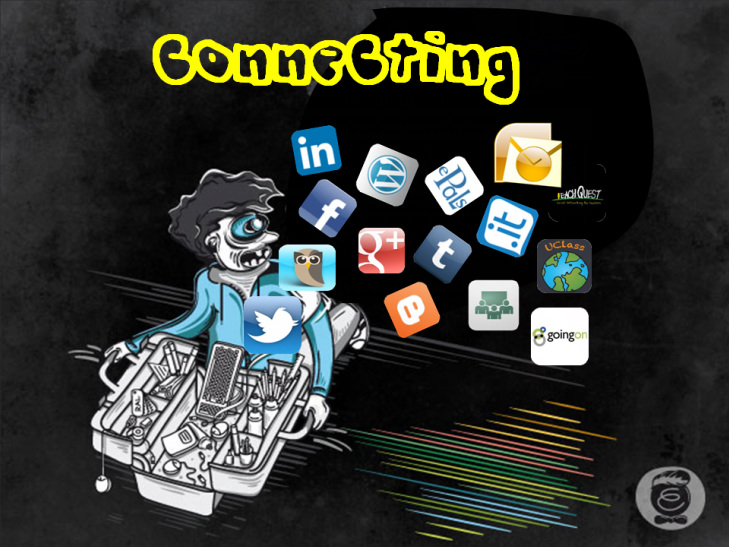 I connected to twitter around 10am and devoted a few hours to looking at the creativity tools which is the topic I chose to look at so my concept of connection has been essentially to connect to resources that have been provided and following up some of the twitter links..some of which like the edudemic link I found very informative and useful Its been quite time consuming and has felt a bit random and frenetic flitting between different spaces different twitter accounts, own websites, BYOD4L website, links etc.. emphasis definitely on getting a feel, connecting to resources (albeit in a superficial way), embedded some resources to make further use (Answer Garden and Audioboo look promising for me). Also joined google+ community and shared my experience of using explee to illustrate its value as a communication tool. Chrissi's comments on my blog made me feel my efforts had been wqorthwhile. I joined the twitter conversation but felt a bit out of it and didn't contribute. Seemed to me that you had to own apple devices to be involved. While I appreciate that the focus is on mobile people needing to be connected minute by minute. This is not my world. I am fairly sedentary and my notion of mobility is moving my laptop from one room to another. But I still feel connected to the people I need and want to be connected to. 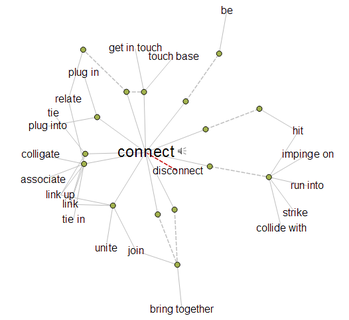 I'm exploring the idea of life's an 'ing'. It led me to explore 'connecting'. I found a neat tool visual thesaurus which allows you to explore the meanings of words visually to help me identify a whole pile of related and associated words eg joining combining collaborating bridging mingling assimilating attaching pairing uniting associating coupling linking sharing and fusing. In life we use different approaches when we try to achieve different levels of connectedness or connectivity in different contexts. So what does this mean for tools we employ in the virtual world? Do we use different devices and tools to try and achieve certain forms of connectivity in particular contexts. I spent a couple of hours this morning exploring some of the tools under the 'creativity' theme. It felt very uncreative as I fumbled around without seeming to make much progress. Still I found I could embed the neat AnswerGarden tool in my blog. I tag my blogs but I can't turn these into word pictures so I think this will be useful. Also I am now aware of some tools I didn't know before and I can now hold a conversation with my kids about instagram. In this blog I want to share a recent experience I had using explee. On a wet Sunday two weeks ago I was sent a link by Chrissi Nerantzi to the explee animation tool and my son took the trouble to follow the link and gave me a glimpse of what it could do. It's a powerful, intuitive drag and drop tool for creating short animations which can be uploaded to youtube. I love animations and over the years I had financed and participated in a number of animation projects and I know how expensive and time consuming they are to produce so I was really excited about the possibility of being able to produce one for myself. The next day I had a go at making my own animation through a process of trial and error. Over an hour I managed to create a 30 sec clip introducing our conference which I embedded in the conference website. In doing it I knew I was trying to achieve something specific. Looking back I can see that I had engaged in a piece of personal development through which I learnt how to make an animation using the tool. It was very satisfying to make something so quickly and so easily. I also felt that I was being creative and the clip I produced, being entirely new to the world - was I guess a product of my creativity. More importantly it did a nice job of bringing our static web page to life. I am in a band and we are going to do a charity gig to raise money for a little boy called Ollie who has a medical condition that needs treating in America. We were just about to promote the gig when I discovered explee so I did a short promotional animation for our website. I wanted to get better at using the tool so a few days later I tried it on a story I had created for my grandson. It's the story of how I came to call my company Chalk Mountain and I had commissioned an illustrator to some drawings for me to bring the story alive. I'd had the idea that I could create a business out of this but at the time I couldn't see how I would animate the stories without a great deal of expense. My six year old grandson happened to be around yesterday and he watched it four times and loved it. The insight I gained from this use of explee was about how new technological tools can help bring an idea that had been dormant into practical existence. Also when personalised in the way it had helped me communicate the meaning of something that was important to me in my life to my grandson in an entertaining and very special way. It also illustrates that a creative product can be brought together through activities at different times with different people. The story was written and recorded and the illustrations done over a year ago but they were only connected through the animation a few days ago. Two days ago I had an email from a talented illustrator I had worked with in the past. It was a speculative email enquiring about possible work opportunities. I emailed back to open up conversation about a possible role as an artist in residence - over 3 or 4 emails I tried to draw him in and he eventually agreed. I was delighted and immediately created a new web page to host information about our two artists. I then spent the best part of two hours creating a new explee animation to show off his work and posted the video clip on the web page and emailed the illustrator to let him know. He loved it and I felt I had in a small way added value to the work he had originally created by giving it a whole new context and meaning and turning it from the static image into a lively animation. Staff at Explee are noticing what people are doing and they picked up my work and invited feedback. So I am now entering a conversation about how I found it to use and commenting on my experiences and what else I would like ffrrom the tool. It's a great example of an organisation gaining feedback from its users to enable them to understand how to make their tool more useful.
I found explee easy to use, the process of using it was enjoyable in spite of the mishaps that inevitably happen when you try something new. My use of it was not planned it was all in response to situations that emerged through the circumstances of my life and there was no way that I could have anticipated these activities in advance of them happening. There were just needs, interests and opportunities for products that the tool could help with. The tool and me were in the right place at the right time. Reflecting on the topics underlying BYOD4L... the explee tool enabled me to 'connect' - existing resources developed for other purposes, 'communicate' in a range of contexts with a range of audiences in interesting and memorable ways. It enabled me to honour previous collaborations' and nurture new collaborations by giving the products of those collaborations a new lease of life. It enabled me to 'create' - bring entirely new things into existence from the circumstances of my life perhaps this is another form of connectivity within an individual's ecology for learning. Guilia Forsythe Wisdom is an outcome of learning 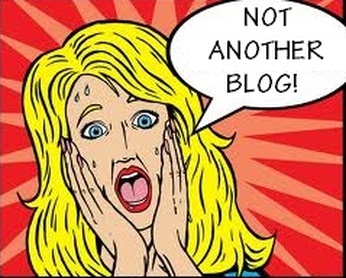 Its early Sunday morning the day before BYOD4L starts and I thought I'd better make a start and find out what the course was all about. I visited the website and read through the first few pages. I tried to get my head around it, it felt a lot but I could see that the central message was just get involved and trust that you will learn something useful. It looked to me as if the design was all about fostering emergence. I saw that I was expected to set up a blog to share thoughts and reflections so being a task oriented sort of person this is what I'm doing. Then I had to decide what to put in it so here are my initial thoughts. I forced myself to ask the question why was I doing it? As always I can come up with a multitude of reasons which is good because that means its worth doing. First and foremost I can see it is an opportunity to be exposed to stuff that I didn't know about and to learn with people who are more knowledgeable than me or who are like me interested to find out more. In the world of technology I love discovering new tools that enable me to do things that I couldn't do before and this website is testament to the liberating power of web 2.0 tools. I had a good example of this two weeks ago when I was introduced to explee by Chrissi and it has made a big difference to the way I present things. It fulfils a need that I have had for a long time and opens up new possibilities. So I am hoping that this will happen again during the BOYD process. Just once is enough. I also want to see how this type of on-line community-based learning is facilitated as this is something I might try doing in future.. There is also an element of duty, of wanting to support Chrissi who has given me so much help and support in the things I am doing. More than that it's hard not to become infected with her enthusiasm and ideas. What comes out of this may also be connected to another open learning project - creativity in development - I'm involved in.. And finally my son is also planning to get involved in the BOYD project so we can add a family dimension to our experience. I guess these are the reasons why I want to do it. Goals? I want to discover some new tools and develop a sense of how they might be used so that I can use to better support the work of lifewide education and to have some enjoyment in the process. Beyond that I wait with anticipation to see what emerges along the way. Emergent stuff is usually far better than what is planned. Anxieties? The message I picked up was that it's a process that can be adapted to any life so the challenge is to do this around other obligations. I am seeing it as a way of developing my own learning ecology. I suppose my main concerns are what people will think of me if I come across a bit naive and feeling overwhelmed by the volume and speed of stuff that emerges through the process. Decisions? I guess I will just pick a topic and see what happens. |
Answer Garden
click on link to expand ANSWER GARDEN
click on link to expand AuthorI love finding new tools that open a whole new world of creativity ArchivesCategories
All
|
BYOD4L BLOG
I wrote this blog during the week of the Bring Your Own Device for Learning open on-line course.
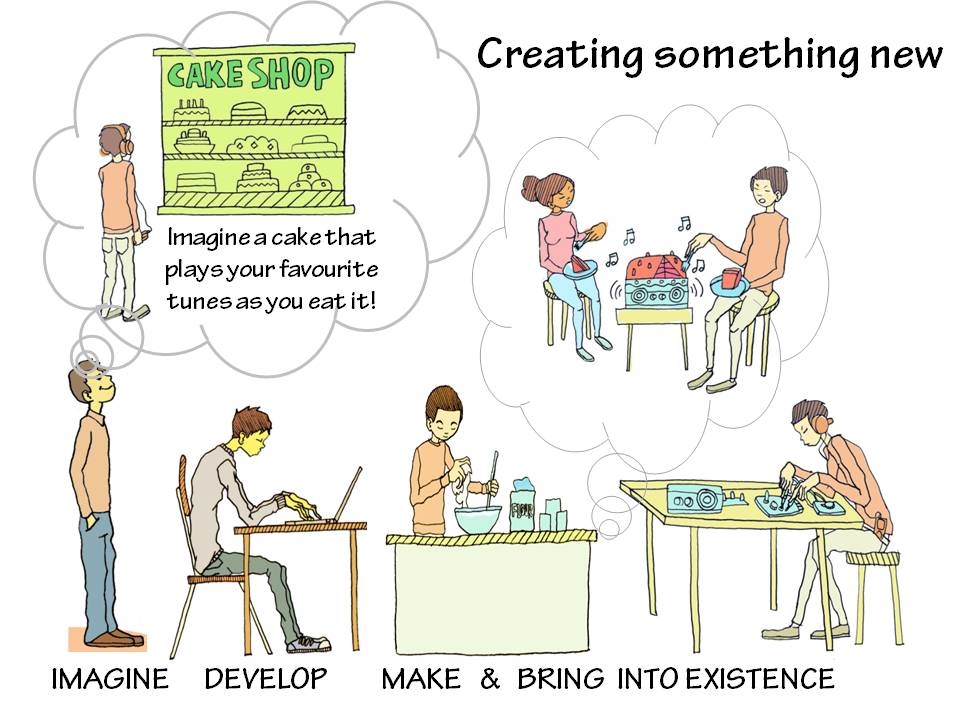
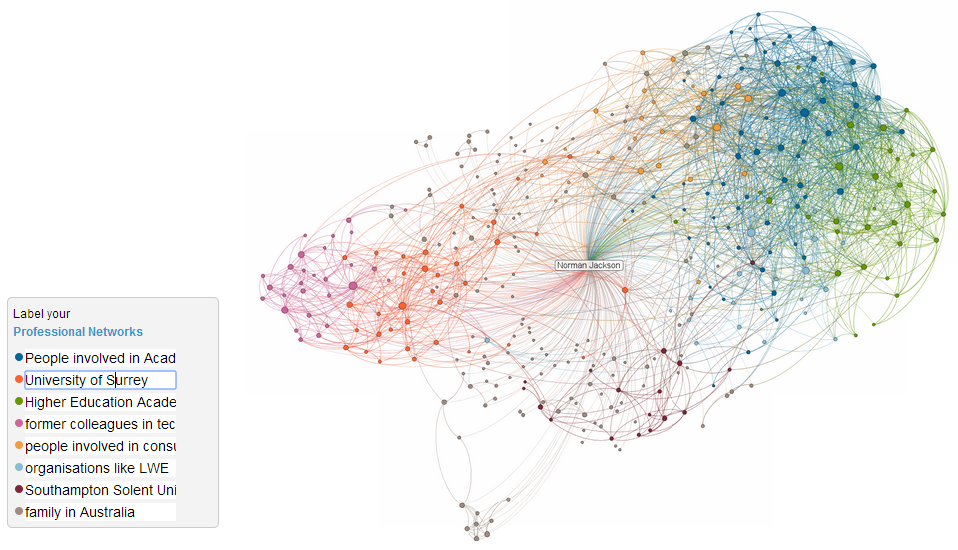
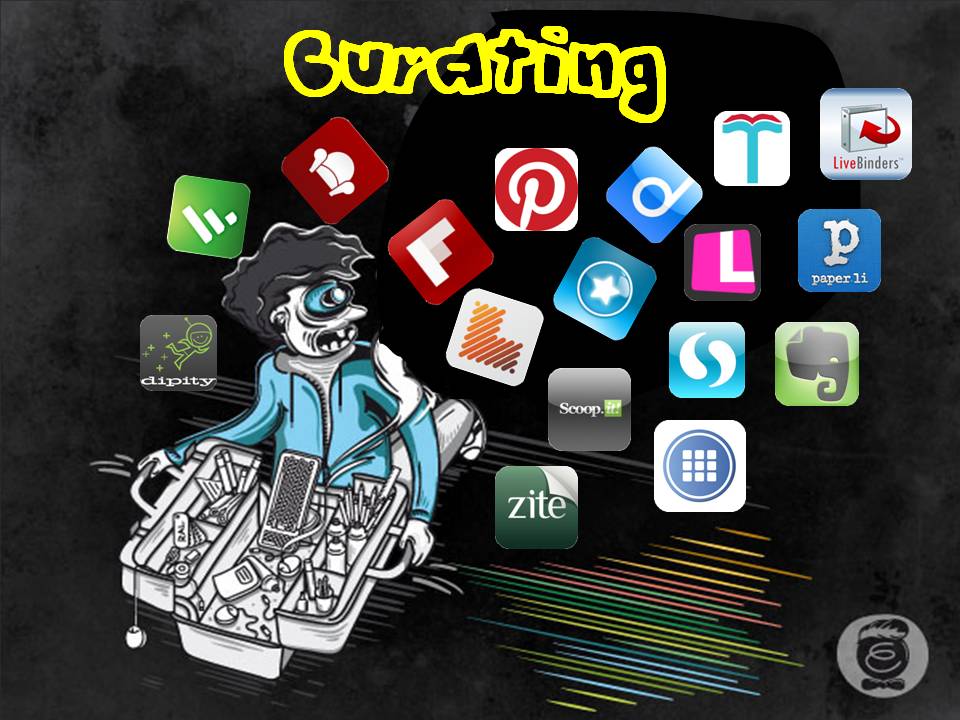
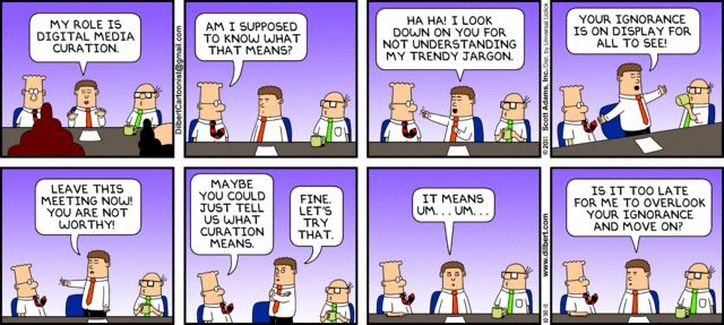
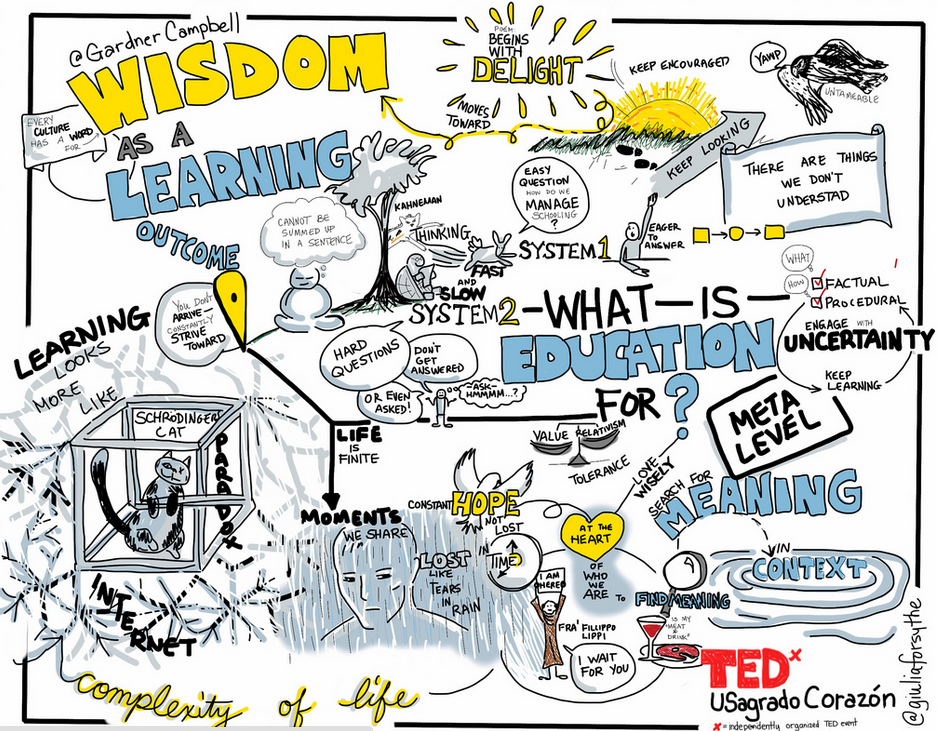
 RSS Feed
RSS Feed